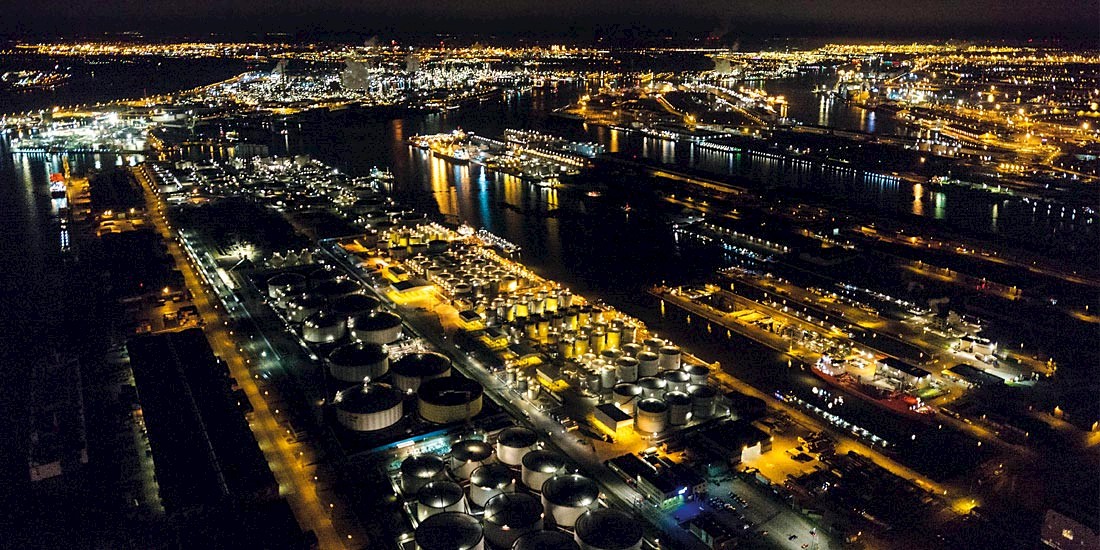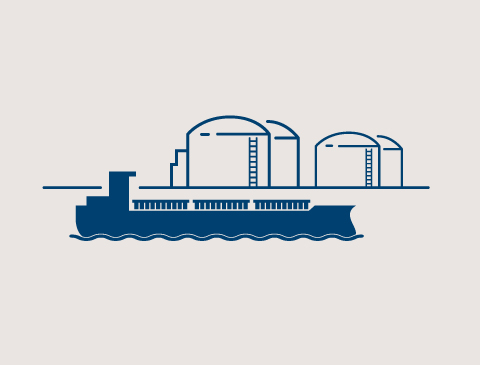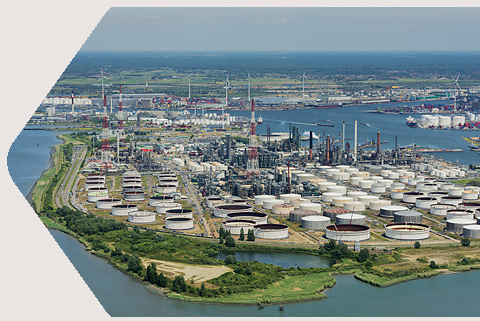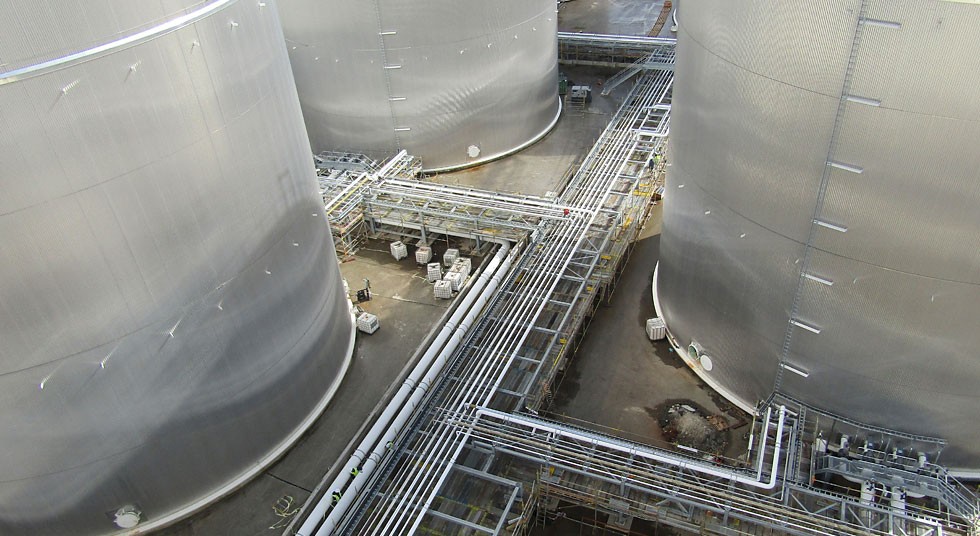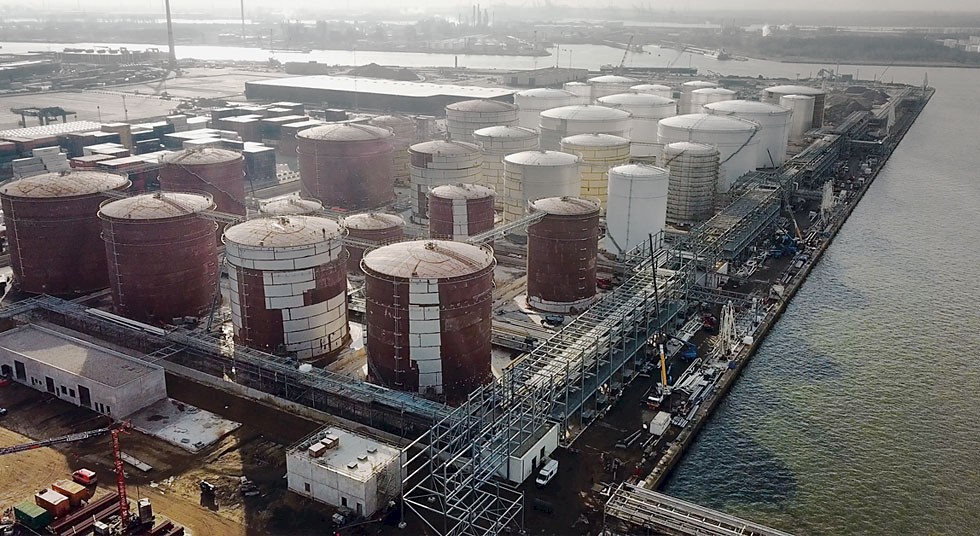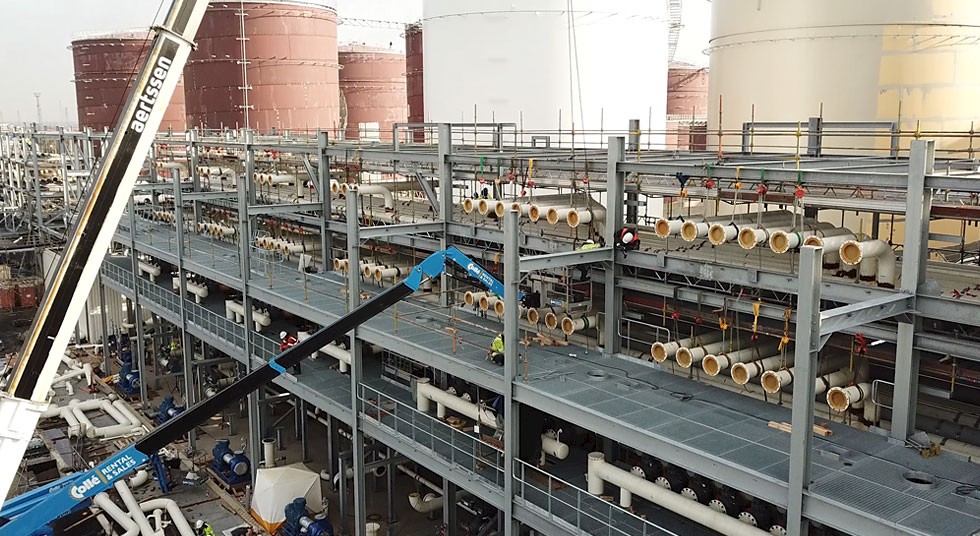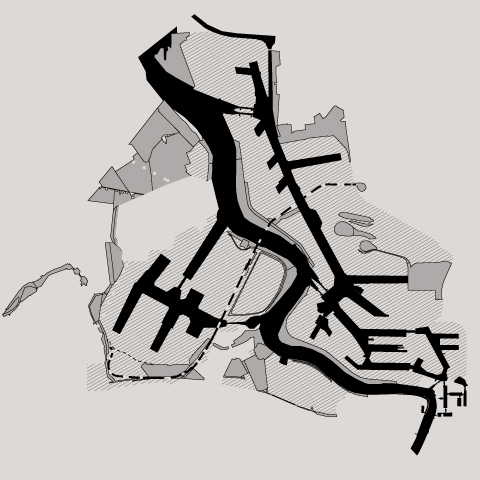Sea Tank Terminal Antwerp
Supplies for the "petrol station of Europe"
The port of Antwerp is the economic engine of the region of Antwerp, Flanders and Belgium. Its chemical industry cluster is considered the largest in Europe. With the restructuring and a major investment in the "Delwaide-Dock", the port is further expanding its position.
From fruit, vegetables and coffee to cars and wind generators – the port of Antwerp handles everything that goes into a ship. At the same time, it is home to one of the largest chemical industry clusters in the EU and, with its enormous crude oil storage capacities and numerous refineries, one of the largest, if not the largest, of the "filling stations" in Europe.
Maritime handling, industry and logistics go hand in hand in the port of Antwerp and account for 140,000 jobs. Containerized (130 million tons) and liquid goods (76 million tons) were the largest contributors to the record handling volume of 235 million tons in 2018.
Always on the move
Everything is in motion, around the clock, and not just in the actual port. The port operator itself, the Antwerp Port Authority (APA), is also constantly pushing ahead with new projects, restructuring and the expansion of docks, quays and port basins. In 2017, the restructuring project of the Delwaide Dock located in the northern part of the port focused primarily on the right bank of the Scheldt. Until mid-2016, this was the home terminal of the Mediterranean Shipping Company (MSC), a major customer of the port. Meanwhile, MSC has relocated to the Deurganck Dock, which is currently being expanded.
Two new major projects
For the free space available at the Delwaide Dock, the port operator was looking for a major investor that would fit into the port‘s portfolio. Eventually, the contract was awarded to one of the world‘s leading companies in the petrochemical industry, which wants to use Antwerp as the base for all imports, exports and transit traffic of its products in the Amsterdam-Rotterdam-Antwerp region (ARA). SEA-Tank Terminal
Antwerp (STTA) was commissioned to build a tank terminal on the 45 ha site. For the first project phase, a storage capacity of 750,000 m³ was planned for refined products. In addition, new quays for inland waterway and seagoing vessels are being built at the 1,250 m long quay.
Parallel to the investments at the Delwaide-Dock, the Sea-Invest-Group is investing in the Hansa Dock, which is located in the port center. Initially, further tank capacities of 160,000 m³ will be built on the site as an extension to the neighboring facilities of Sea-Tank Terminal. The existing facility was commissioned in 2010 and was expanded by 340,000 m³ in 2013. Its current capacity is 860,000 m³.
Further expansion of the Antwerp chemical cluster
Once again, the Antwerp Port Authority is on the right track with this award: "This investment is a further confirmation of our port‘s ability to attract major investors. It will also strengthen our position as one of the largest chemical clusters in the world. This is very goodnews for the port and for our economy," Jacques Vandermeiren, CEO of the Antwerp Port Authority, announced in a press release.
This investment is a further confirmation of our port‘s ability to attract major investors. It will also strengthen our position as one of the largest chemical clusters in the world.Jacques Vandermeiren, CEO of the Antwerp Port Authority

It was especially the large diameters and cost-effectiveness of our HFI-welded steel pipes that convinced the customer.Thorsten Bösch, Business Area Manager Sales
New quays and construction of over 900,000 m³ tank capacity
The operation of the new facilities on both docks will require a great deal of work. This includes upgrading the quay facilities and building tanks with a total capacity of over 900,000 m³. In addition, quays must be built for loading and unloading liquid cargo onto or from incoming inland waterway and sea-going vessels. The several kilometers long piping of the pipe racks – the complex links between the tanks – and the pipelines to the new quays, are currently also under construction.
The investors were looking for a reliable and efficient dealer for the required supplies of steel components. Eventually, the contract was awarded to the globally operating trading company Van Leeuwen, which specializes in steel tube and pipe and has numerous references in the chemical, oil, gas and energy sectors. Matthias Verhaegen was the responsible Van Leeuwen employee. "In addition to steel pipes, we also supplied the necessary flanges and fittings," says the project manager. "For a project of this size, of course, you have to be able to rely one hundred percent on your supply partners. At the end of 2016, Mannesmann Line Pipe received an enquiry for the required HFI-welded steel pipes.
Delivery of almost 22 kilometers HFI welded steel pipes
Thorsten Bösch was the responsible project manager at Mannesmann Line Pipe: "It was especially the large diameters and cost-effectiveness of our HFI-welded steel pipes that convinced the customer." So Mannesmann Line Pipe was awarded an order for 2,250 tons of HFI welded steel pipes in the sizes
DN 300, DN 400, DN 500 and DN 600.
The ordered quantities were produced at the Hamm works in autumn 2017. Starting in mid-October, they were delivered directly to the construction sites at the two docks in the port of Antwerp. "Logistics handling was a particular challenge for us, seeing that almost 1,800 pipes had to be dispatched by truck within nine weeks," said Thorsten Bösch. "However, in close coordination with the responsible employees at Van Leeuwen and on the construction sites, everything worked out very well". The internal production planning, scheduling for further processing and logistics processing with the forwarding companies commissioned by Mannesmann Line Pipe also worked perfectly. Up to seven trucks a day left Hamm for Antwerp until shortly before Christmas 2017.
Operational from the end of 2019
Once the extensive investments have been completed, the liquid cargo volume at Delwaide Dock alone, which was renamed Bevrijdings Dock in February 2019, is estimated at 13 million tons. So there will be plenty of supplies for the "filling station of Europe".
Port of Antwerp – The filling station of Europe
The port of Antwerp is a cornerstone of the petrochemical industry in Europe. Over 40 million tons of crude oil are refined here every year.
The port is a dock port at the estuary of the Scheldt, through the mouth of which ships of over 100,000 tons can sail inland. This reduces the distance to be covered by rail or road in cargo handling by over 80 kilometers. A decisive factor for its size and importance is its central location in Europe: within a radius of 250 kilometers, there are five capital cities and the Rhine-Ruhr metropolitan region with 10 million inhabitants. Within a radius of 500 km, 60 percent of the European Union‘s purchasing power is situated.
The port is the economic engine of the Antwerp, Flanders and Belgium region. From fruit, vegetables and coffee to cars and wind generators – everything that goes into a ship is transshipped here. Its chemical industry cluster is considered the largest in Europe. The combination of goods handling, industrial location and logistics services provides over 140,000 jobs.
